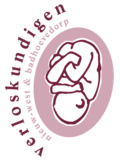The pain during labour is something many women worry about. "What does a contraction feel like?" is a common question, but it’s one that no one can truly answer. We don’t have a memory for pain, and once the birth is over, your baby makes up for everything. Of course, you’d do it all over again for them!
Tips to better manage the pain
Labour is painful. However, everyone experiences pain differently. Generally, contractions are manageable until about 5-6 cm of dilation, after which they get more intense. Birth is partly physical, but it’s also mental. Telling yourself "I can’t do this" with each contraction won’t help. Instead, try to clear your mind and find a peaceful spot where you feel comfortable. A long shower or warm bath can help ease the pain, and you can ask your partner to massage your lower back. After each contraction, there’s a break, so close your eyes and rest when you can.
Pain relief: when is it necessary?
You often hear that women are built for giving birth. While that may be true, we take your request for pain relief very seriously. If you’ve had a previous birth and know you’ll want pain relief, discuss it with us! If your labour is progressing slowly, pain relief can be a blessing, helping you get through it.
Labour is not a competition
If you manage without pain relief, that’s wonderful, but if the pain becomes unbearable, there are options. It's important to know that for all pain relief options (except nitrous oxide), a heart monitor (CTG) will first be done on the baby, and pain relief can only be administered in the hospital.


